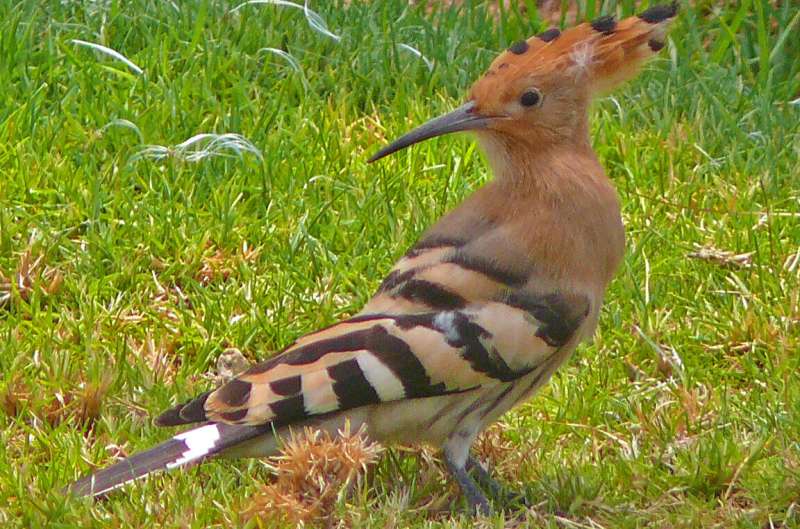May 6, 2021 report
Male hoopoes found to provide extra nourishment to mates who paint their eggs well

A team of researchers from Universidad de Granada and Estación Experimental de Zonas Áridas, both in Spain, has found that male hoopoes provide more nourishment to female mates who paint their eggs well. In their paper published in the journal Proceedings of the Royal Society B, the group describes their study of hoopoes in the wild.
Prior research has shown that hoopoes, a type of zebra-striped bird, have long mating seasons, lasting from February to July. The males woo their mates by singing to them and by fighting with competitors. Once they pair, they mate, and the female lays her eggs in a nest. As the female roosts, the male forages for food and brings it back to his mate—her only source of nourishment. Interestingly, the hatchlings, unlike most other birds, have developed a defensive strategy—if an invader appears, all the chicks point their butts skyward and shoot excrement into the air. Prior research has also shown that shortly after she lays her eggs, the female will begin "painting" them, using her beak to pull an oily substance from her uropygial gland (located beneath the base of her tail) and spreading it over the outer shell. She will continue to do so until the shell is completely covered. When laid, an egg is dark blue—after she finishes painting, it will be light gray. Prior research has shown that the oil (which has a very strong cheese-like odor) serves to fill the pores in the shell, preventing disease. In this new effort, the researchers have found that the males appear to have an awareness of the benefits of well-painted shells and respond by providing their mate with more food.
To learn more about the reaction of males to the painted eggs, the researchers monitored 61 nests. They waited for the females to paint the eggs and then switched some in and out based on hue—lighter-colored eggs meant more paint and thus less chance of sick offspring. Meanwhile, they also monitored the amount of food the male brought the female. After the eggs hatched, the researchers found that the males provided slightly more food to the females when they were sitting on better-painted eggs.
More information: Silvia Díaz-Lora et al. Cosmetic coloration of cross-fostered eggs affects paternal investment in the hoopoe ( Upupa epops ), Proceedings of the Royal Society B: Biological Sciences (2021). DOI: 10.1098/rspb.2020.3174
Journal information: Proceedings of the Royal Society B
© 2021 Science X Network




















